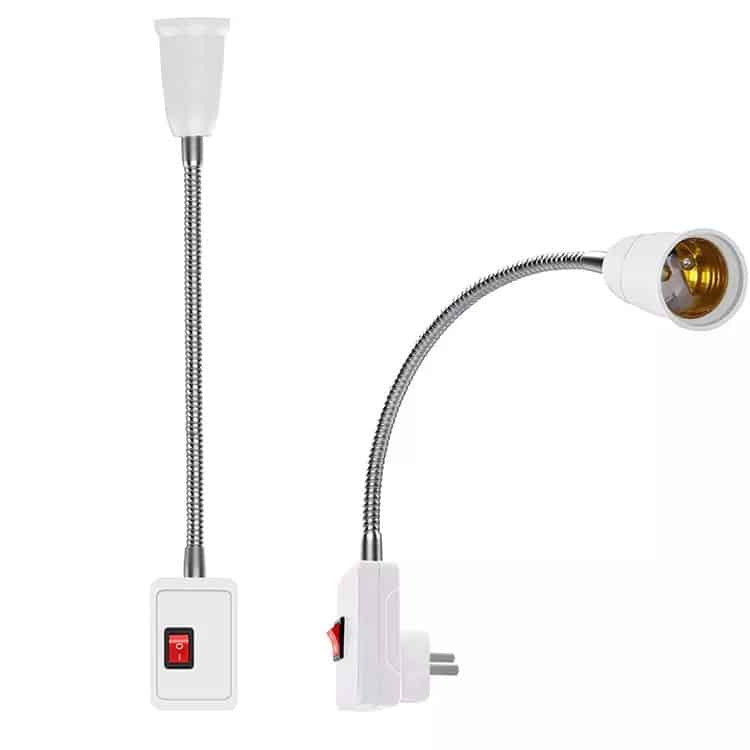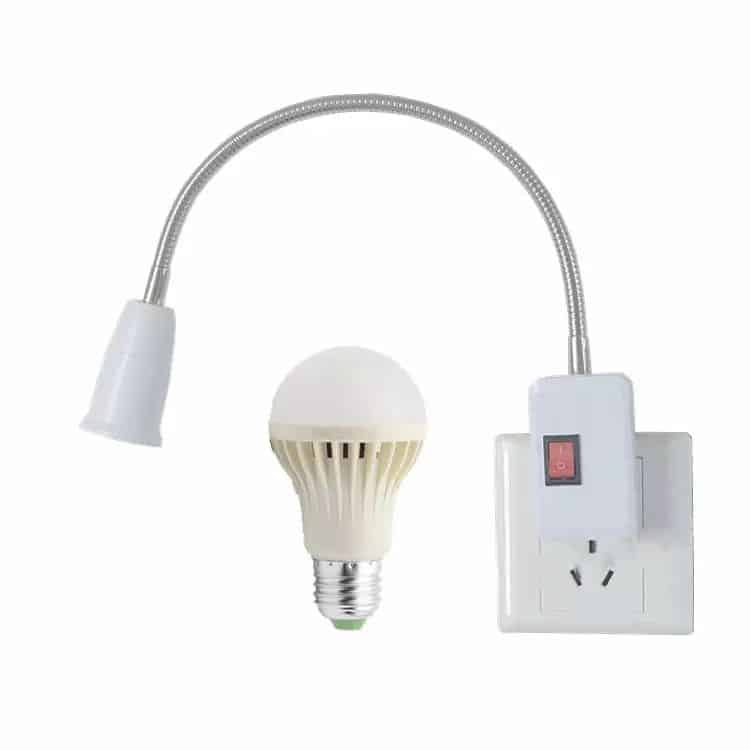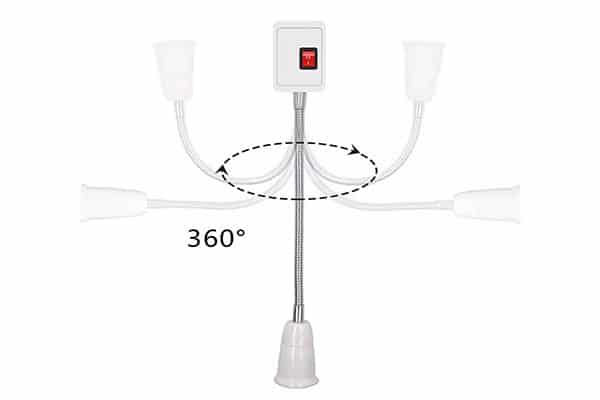Extending a receptacle from a light switch on the wall can be tricky if you don’t do it right. You can have problems with your power or create a safety hazard. If you do it right, it can be a convenient way to add outlets to your room.
When you extend a receptacle from a light switch, make sure the wiring is right and the circuit can handle the extra load. Make sure you use the right connections to keep everything safe.
Now, let’s talk about how to extend a receptacle from a light switch.

Can you run a socket from a light switch?
Yes, you can run a light socket from a switch, but only under certain conditions. First, you need to check if the light switch has a live wire and neutral wire present in the box. Most standard light switches may only have a live wire controlling the light fixture, making it necessary to add a neutral wire if one isn’t available.
Running a socket from a light switch requires ensuring that the circuit can handle the additional load from the new outlet, preventing overloading or tripping the breaker.
How to extend a light socket?
Extending a light socket involves wiring a new socket directly from the existing light switch. Begin by turning off the power at the breaker to ensure safety. Next, run a cable from the switch to the new socket location, ensuring that the gauge of the wire matches the current load of the circuit.
Once installed, verify that the wiring is correct by testing both the light switch and the new outlet. Make sure that the new outlet does not interfere with the light switch’s function.

Can you wire an outlet from a light switch?
Yes, you can wire an outlet from a light switch if there is a neutral wire present in the switch box. Most switches control only the live (hot) wire, so the absence of a neutral wire makes it impossible to wire an outlet directly. If both wires are present, the hot wire can be shared between the light and the new outlet.
Remember, the outlet should be wired in parallel, not in series, to ensure it functions independently of the light switch.
Can you extend a wall socket?
Yes, extending a wall socket is a common practice when adding more outlets to a room. To do this, you can run a wire from an existing wall socket to the new location. Ensure that the new socket is on the same circuit and properly grounded.
However, make sure the load on the circuit is not excessive, which could lead to circuit overloads or fire hazards.
Can I draw power from a wall outlet to add a light and light switch?
Yes, you can draw power from an existing wall outlet to add a light and light switch. This involves running a wire from the outlet to the switch, then from the switch to the light fixture. The key is to ensure that the outlet’s circuit has enough capacity to handle the additional load from the new light fixture.

Can you run an outlet from a light fixture?
Yes, it is possible to run an outlet from a light fixture, as long as the light fixture is on a dedicated circuit that has both a hot and neutral wire. You’ll need to install a junction box, from which you can run wiring to the outlet. This allows the outlet to be powered by the same circuit as the light fixture.
Make sure to follow local electrical codes when running wires and installing outlets from light fixtures.
What can I use to extend an outlet?
To extend an outlet, you can use electrical boxes, conduit, and the appropriate gauge wire. First, ensure that the power is off at the breaker, then run new wires from the existing outlet box to the new location. Always use proper connectors and fittings to protect the wiring.
Make sure the total load on the circuit does not exceed the recommended limit for safety.
How do you turn a light socket into a plug?
Converting a light socket into a plug is possible using a socket-to-outlet adapter. These adapters screw into the existing light socket and provide an outlet for powering small appliances. While convenient, these should only be used for low-power devices since light circuits are typically not designed to handle high loads.

How to connect a bulb socket?
To connect a bulb socket, first identify the hot and neutral wires. Connect the live (hot) wire to the brass terminal and the neutral wire to the silver terminal. Secure the wires using screws, then install the socket into the fixture. Make sure all connections are tight to prevent loose wiring, which could cause short circuits.
After wiring the socket, turn the power back on and test the connection by screwing in a lightbulb.
How to convert a switch to an outlet?
Converting a switch into an outlet involves rewiring the switch box. First, turn off the power and remove the switch. Then, disconnect the wires and reconfigure them to power the outlet. This requires connecting the live wire to the outlet’s brass terminal and the neutral wire to the silver terminal.
Be sure to check your local electrical codes before converting a switch to an outlet, as certain safety regulations may apply.
Final Words:
When extending a receptacle from a light switch, make sure you wire it right and don’t overload the circuit.













